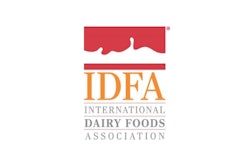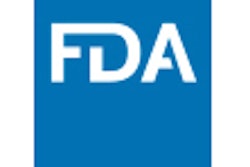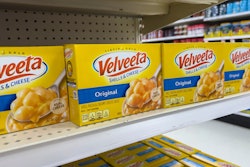Most food and beverage manufacturers were ready for the Food Safety Modernization Act (FSMA). In fact, many did not require equipment changes. The regulations were met on existing equipment by modifying operating protocols and improving data collection and management, according to the 2017 Trends in Food Processing Operations report from PMMI, The Association for Packaging and Processing Technologies.
But quick FSMA compliance is not always the case for smaller manufacturers and some dairy and produce companies. Seal the Seasons, a startup frozen produce manufacturer located in Chapel Hill, North Carolina, is one example. The company sources fruit locally to the particular region where it is sold. “When you’re a startup business, the software that’s immediately available to you is limited, especially three or four years ago,” says Bryan Cohn, vice president of supply chain & market development. Software systems available back then were geared to legacy systems, which were quite expensive, he states.
“We are not anchored by legacy systems,” Cohn says. “We have the ability to do anything we want in terms of documentation, record keeping, implementation and so forth. I think our challenge has been interpretation of FSMA.”
The frozen fruit company initially partnered with a European firm to help it develop track-and-trace and inventory systems. “But as our business grew and changed, we found the software was not for us,” Cohn adds. The company heard about FoodLogiQ and realized that the software as a service supplier was nimble enough to handle its needs. “If there is a process or a procedure that needed to be changed or adapted, we can do it on the fly, not only for our facility in North Carolina, but with the facilities we were bringing online across the East Coast at the time,” Cohn says.
Using FoodLogiQ, Seal the Seasons was up and running within weeks with some of its core functionality. “The biggest advantage of this system is the fact that we’re able to capture not only our documentation, but we’re able to build out work flows and assessments and incidents that are adapted strictly to our production standards,” Cohn says. “Additionally, we’re able to capture all of the relevant food safety information of our suppliers, which are farm growers.”
Seal the Seasons uses FoodLogiQ’s software in unique ways. “We just created a new community within FoodLogiQ to do evaluations for suppliers that are not yet in our supply chain,” Cohn says. “For example, I was on the West Coast evaluating farm partners and potential production partners that we’ll be using as we move into the West Coast later in 2018. I was quickly able to put these potential partners into this particular community in FoodLogiQ. I had already created an onsite evaluation form, and I was able to upload all of their documentation on the go.”
Transparency is essential at Seal the Seasons. “We market ourselves as a local frozen fruit product. As we move into 2018, you’ll be able to take the lot code off of our bag and put it into our website, and it’ll take you straight to the farm, or farms if it’s a blended product, where that produce was produced,” Cohn states. He expects to see a one-year ROI on the software investment this spring as the company moves into the 2018 harvest season.
A matter of interpretation
Even for larger companies, FSMA compliance can be an expensive proposition. “FSMA is raising lots of issues within food companies, and it’s impacting the bottom line,” says a bakery engineering director who participated in PMMI’s study. “Misinterpreting the pending food regulations is a potential problem that could impact almost every business. Even food safety consultants can misinterpret regulations.”
While 2 out of 3 companies report 100 percent compliance to FSMA, validation and documentation still pose the greatest challenges. Food and beverage manufacturers continue to keep food safety top of mind as they upgrade plant floor equipment. According to the 2017 Trends in Food Processing Operations report, food processors are requesting FSMA-related equipment design features that include:
- •Sanitary design.
- •Easy cleaning.
- •Easy maintenance.
- •Robust data collection.
- •Ease of use for operators.
PMMI’s research report goes on to say that while food manufacturers are demanding the highest sanitary equipment design, they simultaneously need OEMs to:
- Focus on sanitary designs and documentation.
- Understand that FSMA mandates careful documentation of cleaning procedures.
- Comprehend that FSMA requires cleaning of equipment and facilities be recorded, and these activities must be done in a way that gives FDA confidence it was completed properly.
- Not rush new machine designs to market.
”Food companies aren’t particularly good at documentation to begin with, says David Acheson of The Acheson Group, a global food and beverage safety consulting company. “Historically, unless you’ve needed to meet the requirements of an FDA-regulated system like seafood, or had used HACCP, or USDA meat, poultry, egg HACCP, you aren’t in the mindset of having to keep records for regulatory purposes,” he explains. Food companies, says Acheson, “are good at solving problems, but traditionally, because there hasn’t been a need, they aren’t very good at capturing when they’ve identified a problem and what the corrective action is.
Another challenge is collecting the information regulators expect. “In the context of FSMA, there are certainly specific requirements around what you need to do to document your verification process,” Acheson states. “Assuming you’ve built your food safety plan with a monitoring frequency, the difference is between what FDA calls corrections and directive actions. The questions processors ask is, ‘Do I have to write everything down, or only certain things?’” Acheson says there’s a challenge of truly understanding what needs to be done by processors.
Many food and beverage companies continue to keep records with pencil and paper. “Written documentation that gets filed away works OK up to a point, but not with the volume that you need for FSMA compliance,” says Acheson. “Excel works OK, but can become cumbersome. Capturing records on paper and making sure it’s filed, logged and available for an FDA inspector within 24 hours of showing up to do a routine FSMA inspection of your food safety plan has proved to be a challenge,” he adds.
“I think there are some food companies that believe they need to have critical control points everywhere, which isn’t the intent of FSMA at all,” Acheson says. “FSMA isn’t HACCP. It’s not a fundamentally different philosophy, because they’re both preventive controls. But some of the details around preventive control thinking, as opposed to classic HACCP, are a little different, and the approach is different.”
Acheson advises that the first step in improving documentation is to know your requirements. “Whether you’re an FSIS- or an FDA-regulated facility, it doesn't matter,” states Acheson. “Understand what it is you’re required to do to reach compliance.”
Step two is review what you’re doing today. “Whether it’s paper, Excel or sophisticated software, is what you’re doing today meeting that level of compliance requirement?” Acheson asks. “Do a gap analysis on what you’re doing now compared with what you need to do for compliance.”
The third step is to look at the best ways for you to fill that gap. Acheson emphasizes “for you” because for some, paper and pencil may be the best way to go. Some companies don’t have the resources for more sophisticated documentation systems, and they’re already 90 percent to compliance with the paper and pencil method.
The fourth area, according to Acheson, is researching if there is something you could do to put your operation closer to industry best practice, such as trend better results to help you solve problems before they happen. “One of the things I like about software is that it allows you to trend data,” Acheson states. It’s not a FSMA requirement, but software and data collection can make a huge difference between minor recall costs and very expensive ones.
The challenge continues
Companies are struggling with documentation, says Eric Hansen, SafetyChain Software’s director of technical solutions, because there’s a saying in the food safety world: ‘“If it’s not documented, it’s not done.’ That is the critical piece. That is what the auditor is looking for.”
In order to achieve it properly, he says, you need to document how procedures need to be documented. This may sound like doubletalk, but it’s a reality. Documentation includes the management of those governing documents and standard operating procedures, Hansen adds.
Under FSMA, the expectation for documentation includes documentation of change management. In other words, FSMA requires documentation and change management of the forms that are used to ensure or document operational enforcement of the standard operating procedures outlined in those documents, and certain key forms, to be reviewed daily and signed off by supervisors.
Most of us can imagine the overworked QA manager looking through mounds of paper at the end of each day making sure everything is correct and complete. “When you’re getting audited, the auditor is looking for you to say what you do, they’re looking for you to prove that you do what you say, and that requires that you to document everything,” Hansen says.
Paper-based documentation management requires significant human resources. Larger food and beverage companies often have the resources to ensure these documents are in place. But documentation storage can be problematic, particularly in USDA facilities, where they must store documents for five or more years in some cases. “We had one poultry processor tell us if they could get rid of all of the huge filing cabinets, they would have room for another production line,” states Hansen.
He says that almost all food and beverage processors still have some paper documentation in some locations. “I think we’re another generation of capital investment away from really getting to the true Internet of Things, because there is a lot of equipment out there that just doesn’t spit out data. In the FSMA safety world, you have the compounding issue that a lot of what you need to capture cannot be captured automatically. It requires a person to review it,” Hansen says.
Today, software providers like SafetyChain allow processors to capture data from the equipment that can generate it. In addition, it can help processors capture manually-entered data on mobile devices and workstations throughout the facility. Many SafetyChain customers are using dashboards for statistical processing and process control monitoring. “They want to know they can monitor using our tools, and they can monitor in real time,” Hansen adds
According to Hansen, SafetyChain’s vice president of food safety and quality assurance applications Dan Bernkopf always likes to say that “SafetyChain can make a good food safety program great, but it can’t make a bad food safety program good. We’re only going to be as good as your programs and your people.”
It all boils down to having the right people using the proper tools to meet FSMA documentation compliance.
To learn about how craft breweries are implementing food safety and quality programs that not only meet stringent federal regulations but also improve their systems, please read "Craft brewers cultivate the taste while keeping products safe."




















